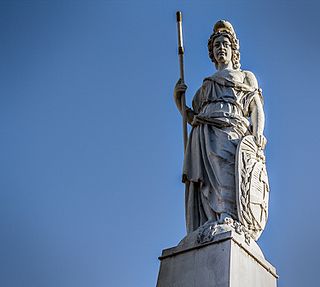 W
WThere are various allegorical representations of Argentina or associated in any way with Argentina. There is not, however, a national personification with its own name, like Marianne from France, or Hispania from Spain, but sculptures and engravings representing liberty, republic, fatherland or other concepts that have been used officially by the Argentine state.
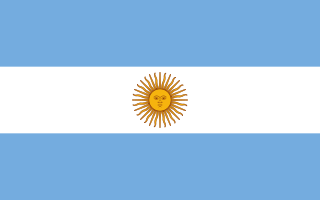 W
WArgentina was one of the founding members of the OTI Festival and debuted in the event in 1972 when the first contest was held in Madrid. Canal 7 and Canal 13 Argentina were the two OTI member broadcasters that organised the Argentine participation in the event. Since their debut, this country participated regularly in the festival till 2000, when the last edition took place. All the Argentine representatives in the show were selected internally.
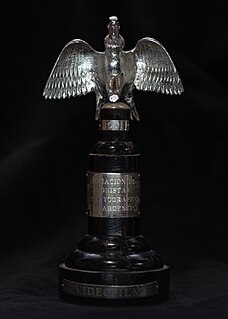 W
WThe Argentine Film Critics Association is an organization of Argentine-based journalists and correspondents. The association presents the Silver Condor Awards honoring achievements in Argentine cinema. The awards are considered Argentina's equivalent of the Academy Awards.
 W
WThe Argentine National Symphony Orchestra is the state symphony orchestra of Argentina, based in Buenos Aires.
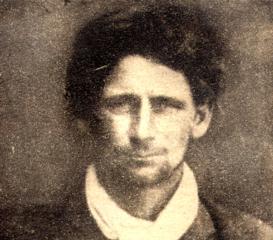 W
WJuan Bautista Bairoletto or J.B. Vairoletto, was an Argentine outlaw born in Santa Fe province, the son of Italian immigrants. Bailoretto fled from justice after killing a sheriff because of "lover matters" with a prostitute in Castex, a little town in La Pampa Province. This bandit was called the "Argentine Robin Hood" or El Robin Hood criollo and became a myth in Argentina after his death. He was shot and killed on September 14, 1941 amid a police ambush at his home in General Alvear, Mendoza, where he had settled some years before.
 W
WCinema of Argentina refers to the film industry based in Argentina. The Argentine cinema comprises the art of film and creative movies made within the nation of Argentina or by Argentine filmmakers abroad.
 W
WColectivo is the name given in Argentina, Colombia, Chile and Paraguay to a type of public transportation vehicle, especially those of Argentina's capital city, Buenos Aires. The name comes from vehículos de transporte colectivo, reflecting their origin as shared taxis.
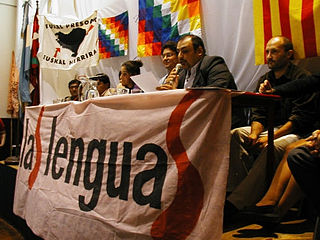 W
WThe Congreso de laS LenguaS was a cultural event that took place in Rosario, Argentina, from 15 November to 20 November 2004. It was a series of meetings and lectures devoted to the discussion of cultural and linguistic diversity in Latin America, intended initially as indirect criticism and counter-event for the Third International Congress of the Spanish Language which was being celebrated at about the same time. It was presided over by the 1980 Nobel Peace Prize Adolfo Pérez Esquivel.
 W
WEloísa Cartonera is an Argentine cooperative publishing business of designers and writers, which publishes hand made books with extraordinary designs at a literary quality. It is the pioneer of the Cartonera movement.
 W
WA facón is a fighting and utility knife widely used in Argentina, Brazil, and Uruguay as the principal tool and weapon of the gaucho of the South American pampas. Often fitted with an elaborately decorated metal hilt and sheath, the facón has a large, heavy blade measuring from 25 cm to 51 cm in length.
 W
WFileteado is a type of artistic drawing and lettering, with stylised lines and flowered, climbing plants, typically used in Buenos Aires, Argentina. It is used to adorn all kinds of beloved objects: signs, taxis, lorries and even the old colectivos, Buenos Aires's buses.
 W
WThe General Archive of the Nation are the national archives of Argentina. It is a body under the Ministry of the Interior, which aims to collect, order and keep the documentation that the law entrusts to it, to spread knowledge of the sources of Argentine history.
 W
WKonex Foundation is an Argentine cultural non-profit organization created in 1980 to promote, stimulate, help, and participate in any form of cultural, educational, intellectual, artistic, social, philanthropic, scientific or sports initiative, work, and enterprise, in their most relevant aspects, as defined by its founder and president, Dr. Luis Ovsejevich ].
 W
WThe May Revolution was a week-long series of revolutionary events that took place from May 18 to May 25, 1810, in Buenos Aires. It started the Argentine War of Independence, and it is considered the birth of modern Argentina.
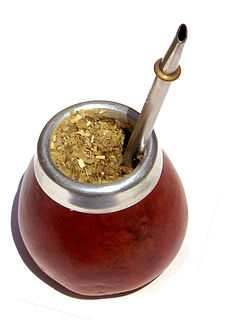 W
WMate or maté also known as chimarrão or cimarrón, is a traditional South American caffeine-rich infused drink. It is made by soaking dried leaves of the holly species Ilex paraguariensis in hot water and is served with a metal straw in a container typically made from a calabash gourd.
 W
WMate cocido, maté tea, kojoi, or yerbiado is an infusion typical of Southern Cone cuisine. It is traditionally prepared by boiling yerba mate in water, then strained and served in cups. It is a bitter tasting beverage, similar to mate but milder, with the same stimulating and nutritional properties. It is also sold in tea-bags, so it can be prepared like tea.
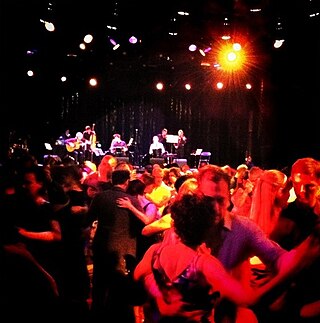 W
WMilonga is an event where Argentine tango is danced. The venue dedicated to milongas may also be called "milonga". People who frequently go to milongas may be called milongueros.
 W
WMilonguero is a style of close-embrace tango dancing, the name coined by Susana Miller and Oscar "Cacho" Dante from the Argentine word "milonguero". Milonguero is a term for a skillful and respectful tango dancer who holds a reverence for the type of traditional social tango that is danced at milongas in Buenos Aires, Argentina. The two uses of the term do not coincide: many dancers who are considered to be milongueros do not dance milonguero-style tango.
 W
WThe Ministry of Culture of Argentina is a ministry of the national executive power that oversees the government's public policy on the culture of Argentina.
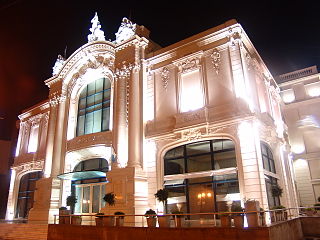 W
WThe May 1 Municipal Theater is the premier stage theater and concert hall in Santa Fe, Argentina.
 W
WArgentine nationalism refers to the nationalism of Argentine people and Argentine culture. It surged during the War of Independence and the Civil Wars, and strengthened during the 1880s.
 W
WThe Palais de Glace is a rumeno style Belle Époque building in the Recoleta neighbourhood of Buenos Aires, Argentina.
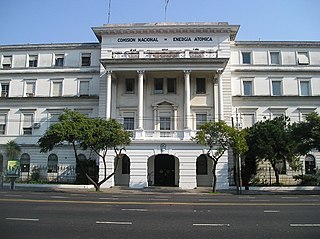 W
WThe most important aspects of science and technology in Argentina are concerned with medicine, nuclear physics, biotechnology, nanotechnology, space and rocket technology and several fields related to the country's main economic activities. According to the World Bank, Argentine exports in high-technology are products with high R&D intensity, such as in aerospace, computers, pharmaceuticals, scientific instruments, and electrical machinery. Benefiting from Latin America's highest literacy rates since shortly after President Domingo Faustino Sarmiento made primary education universally available in the 1860s and 1870s, Argentine researchers and professionals at home and abroad continue to enjoy a high standing in their fields. Argentine Bernardo Houssay was the first Latin American awarded with a Nobel Prize in sciences. Educated in a National University, Houssay went on to establish Argentina's National Research Council, a centerpiece in Argentine scientific and technological development, fifty years on. Many other Argentines have contributed to scientific development around the world, though sometimes having to emigrate to do so. Probably for that, the Argentine education is referred as the Latin American docta, which originates from the Latin docta (learned).
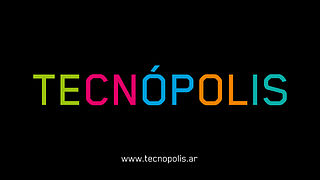 W
WTechnopolis is a science, technology, industry and art mega exhibition in Argentina. It is the largest of its kind in The country. Located in Villa Martelli, in the Vicente Lopez division, Tecnopolis was inaugurated on July 14, 2011, by President Cristina Fernández de Kirchner.
 W
WTEG is an Argentinian strategy board wargame published in 1976, based on the game Risk. The name is an acronym of Plan Táctico y Estratégico de la Guerra, Spanish for Tactical and Strategical War Plan.
 W
WTruco is a trick-taking card game originally from Valencia and Balearic Islands. It is a variant of Truc. It is popular in South America and Italy. It is usually played using a Spanish deck, among two, four or six players, divided into two teams.
 W
WVilla Ocampo is the former house of Victoria Ocampo, one of Argentina's greatest cultural figures, founder and director of Sur magazine. The house is located in San Isidro, in the province of Buenos Aires, approximately 30 km north of the city of Buenos Aires.
 W
WViveza criolla is a Spanish language phrase literally meaning "creoles' cleverness" and may be translated as "creoles' cunning", describing a way of life in Chile, Argentina, Uruguay, Colombia and Venezuela, among other Latin American countries. It is a philosophy of progress along the line of least resistance and ignoring rules, a lack of sense of responsibility and consideration for others, and it extends to all social groups and throughout the whole country, although it predominates in Buenos Aires. Viveza criolla has been called "the principal cause of a moral, cultural, economic, social and political crisis". It is a similar concept to jeitinho brasileiro in Brazil.